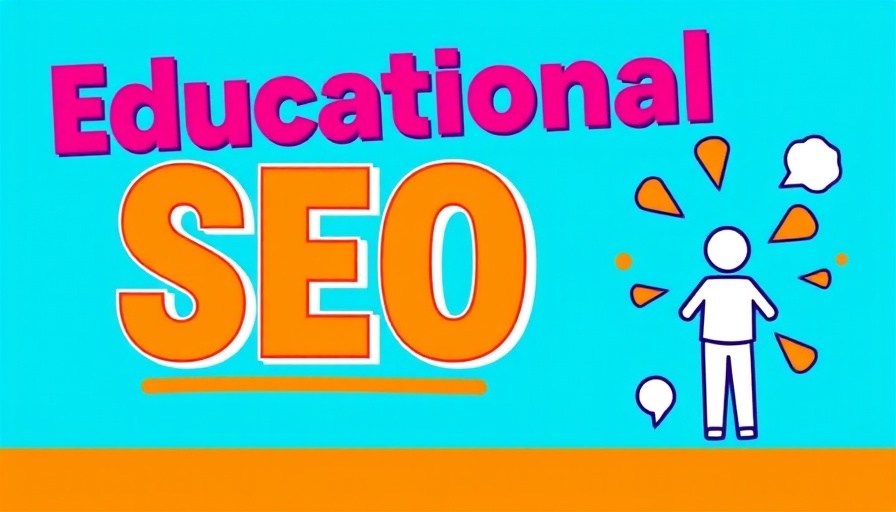
Understanding SEO in the Education Sector
Search Engine Optimization (SEO) plays a vital role in how educational institutions such as colleges, universities, and schools position themselves online. In an era where traditional education is facing scrutiny over its value amidst skyrocketing student debt, effective SEO tactics become indispensable for attracting students and enhancing visibility.
The Unique Challenges of Education SEO
Unlike many other industries, educational institutions face unique challenges that can complicate SEO efforts. High operational complexities, limited marketing budgets, and government influence shape the way schools communicate and market themselves. For example, institutions often rely on their inherent authority to gain online visibility, not fully utilizing SEO strategies that could boost their reach in meaningful ways.
Embracing a Comprehensive SEO Strategy
1. **Optimize for Local SEO**: Local SEO is critical for schools looking to attract nearby families. Managing Google My Business and ensuring personal details (Name, Address, Phone) are consistent across platforms can enhance visibility in local search results. The integration of local content, such as community partnerships or student success stories, is also essential.
2. **Leverage Content Marketing**: High-quality, informative content helps educational institutions establish credibility. This includes crafting engaging program descriptions, sharing student achievements, and providing resources that can help parents or students in decision-making processes. Regularly updating blogs or creating educational materials also positions schools as thought leaders.
3. **Prioritize User Experience**: A seamless user experience on a school's website can significantly reduce bounce rates and boost engagement. Key factors include fast loading times, mobile responsiveness, and user-friendly navigation. With students increasingly using mobile devices for research, optimizing the digital landscape has never been more crucial.
Future-Proofing SEO Strategies
The landscape of SEO is continuously evolving, influenced by changes in search engine algorithms and user behaviors. Here are several strategies that can enhance the resilience of an institution's online presence:
1. **Utilizing Semantic Search and Topic Clusters**: Recognizing the shift towards understanding user intent and context, institutions should develop content that answers common questions prospective students pose. Building topic clusters around central themes with interconnected articles enhances SEO by showing authority on subjects.
2. **Video Content Optimization**: Integrating engaging video content can elevate both user engagement and search rankings. Schools should focus on producing informative video materials that are optimized with the right keywords and tags, making them more likely to appear in search results.
3. **Harnessing Social Media**: Actively engaging with the community on social media platforms helps boost SEO efforts indirectly. Increased social signals such as likes and shares can drive traffic to the school’s website, enhancing its online presence.
Continuous Learning and Adaptation
Monitoring SEO performance and adapting to algorithm changes is essential for success. Institutions must stay informed about the latest trends in SEO, including the impact of AI and machine learning. By monitoring user engagement and applying predictive analytics, education marketers can adjust their strategies to maintain relevance and competitiveness.
The Value of Strategic Partnerships
Collaborating with data-driven marketing agencies or SEO specialists can simplify the complexities of the SEO landscape. Establishing a partnership with experts can help educational institutions deploy sophisticated SEO strategies that align with their unique challenges.
Conclusion: Take the Next Step in Your SEO Journey
As educational institutions navigate the evolving digital landscape, understanding and implementing effective SEO strategies is more important than ever. By prioritizing user experience, leveraging local SEO, and utilizing content marketing, schools can attract prospective students and ultimately enhance enrollment rates. Begin optimizing your school's SEO strategies today for better community engagement and greater visibility.
 Add Row
Add Row  Add
Add 




Write A Comment